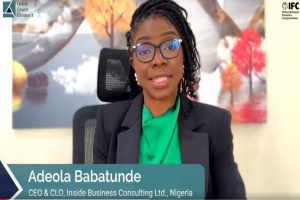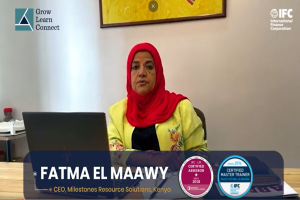Strategies for Teaching Adult Learners
"Those who keep learning will keep rising in life" ― Charlie Munger
This quote from the American billionaire businessman is so apt. Learning is a process where we acquire new things. These new things could be skills, attitude, knowledge, behavior, or most importantly in today’s world – a change in our attitude. So, to live in a world so dynamic, fast-paced, and in recent times turbulent, we have no choice but to keep learning, unlearning, and relearning. As professionals in the workplace in today’s world, learning never ends.
For a lot of professionals, adult learning is a great step in career building or personal development with several institutions making it possible for interested persons to embark on a course to improve their skills at a more advanced age. Most adult learners have external responsibilities and conditions that may impact their learning process, this could be in form of commitments from the workplace, the family, and other engagements. The trainer is expected to wield the power of captivation during the learning process. The trainer must be skilled to ensure that when facilitating sessions for adult learners, they indeed are not only present in the class but engage and ultimately translate the learning to the workplace. There are many techniques to engage learners but using the CRAVE (Chunking, Relevance, Activities, Visuals, Examples) formula ensures you do not leave your adult learners behind.
Chunking
For effective learning that sticks we cannot overload adult learners with too much information. Bite-Size information-packed sessions will ensure that learners are not overwhelmed. This is called Chunking and according to the Cambridge dictionary, this method is a way of dealing with or remembering information by separating it into small groups or chunks. Learners respond best when they are presented with easily digestible bites or mini lessons that are in line with the overall theme of the course. Training using bite-size information is relevant because it targets teaching clear and concise information to the audience.
Relevance
All humans irrespective of their background have the same station they log into; be it a radio station or television station. This station is the ‘WIIIFM’ the ‘What Is in It for Me’ station. For all of us once we do not get this station we usually will tune off. All training must be properly planned and delivered in such a way that the learners get interested in the subject matter and become willing to get the most out of it. Thus, the relevance of training must be put under the lens before the actual training, so we need to make sure that relevance is established. Training and development activities will only be successful if learners can see any relevance in them. There are various ways to show your employees what’s in it for them. Your learners do not want to simply sit there and listen to repetitive lectures or useless theories. They want to listen to something that they will be able to find some value in. So, your training sessions need to be well prepared to ensure that they are relevant to the learners who will be attending the course.
Activities
The place of activities and encouragement of participation cannot be over-emphasized in training for learners be they young or old learners. The IFC’s Principles for Learning and a Guide to Training for skills-development professionals working in emerging markets shows us the importance of designing training with the various learning preferences in mind. The 4 common learning styles - Reflectors or those that learn by observing, Theorists or those that learn by creating mental models, Pragmatists or those that learn by trying out new ways and lastly Activists or those that learn by doing - show us that our uniqueness as individuals translates also in the way we learn. Trainers and other learning professionals are reminded always to make sure that different techniques are used to address these common learning preferences.
Visuals
Numerous studies done by educational researchers have shown us that as much as 70% and in some instances upward of 80% of human learning occurs visually. Visually rich training materials keep the eyes busy and therefore, the brain more alert and active to learn information. If all this research that takes place is fundamental, why then do we have some company training manuals with few pictures or even videos as part of the training? Learning with art is a key strategy for capturing the mind of learners, through this medium, one can present content to learners in a meaningful way that aids understanding. However, it is worthy to note that appealing and attractive content must be relevant and helpful to have a positive impact on learning.
Examples
When I reflect on most of my life lessons, I realize that some significant lessons I learned came from stories I had heard from not just family and friends but also strangers. Everyone loves a good story, and they not only engage us, but they can make things stick. As trainers, we must weave a little bit of illustrating examples, storytelling, or case studies during sessions. Examples get learners more interested in learning and provide them with a model they can relate to. Facilitators of adult learners, need to articulate examples and lived experiences while teaching to allow the modeling of an idea that can stimulate dialogues and discussions while reminding learners of their own experiences as it relates to the course content. Adult learners can then re-evaluate their understandings of the course by applying new knowledge to strengthen or interrogate their assumptions built from their past experiences.
Nneka Okekearu is an IFC Master Trainer in Nigeria with a passion for helping women professionals and entrepreneurs unlock their potential, performance, and profits.
Photo by Christina @ wocintechchat.com on Unsplash





